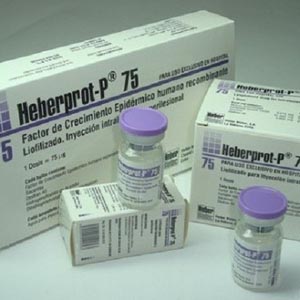The application of Heberprot-P 75 in patients with Grade 3 Diabetic Foot
Keywords:
PATIENTS, DIABETES MELLITUS, DIABETIC FOOT /diagnosis, ULCER, DIABETIC NEUROPATHIES, DIABETIC RETINOPATHY .Abstract
Introduction: the Diabetic Foot is a clinical alteration of etiopathogenic-neuropathic base and induced by maintained hyperglycemia, with or without coexistence of ischemia, and previous traumatic trigger, produces injury and/or ulceration of the foot.
Case report presentation: a 44-year old, white race patient who came to the emergency room because several days ago he perforated the plantar region of the right foot with a metal nail, he referred not having sensitivity in the feet, he noticed the loss of blood, increased volume of the foot with change of color, that’s to say redness, increasing along the leg, as well as high fever of 39 degrees centigrade. The patient was admitted with the diagnosis of a Systemic Inflammatory Response Syndrome by a Grade 3 Diabetic Septic Foot in the Hospitalization Room and the treatment started.
Conclusions: it can be concluded that the application of the Heberprot-P showed satisfactory results reincorporating the patient to the social and working life, without physical limitations, and in a short period of time.
Downloads
References
1. Standards of Medical Care in Diabetes. Diabetes Care[Internet]. 2016[citado 25/10/2018];3 9(supl.1): s4-s5. Disponible en: https://doi.org/10.2337/dc16-S003
2. Schaper NC, Van Netten JJ, Apelqvist J, Lipsky BA, Bakker K. Prevention and management of foot problems in diabetes: a Summary Guidance for Daily Practice 2015, based on the IWGDF Guidance Documents. Diabetes Metab Res Rev[Internet]. 2016[citado 25/10/2018]; 32(supll. 1): 7-15 Disponible en: https://onlinelibrary.wiley.com/doi/epdf/10.1002/dmrr.2695
3. Feldman EL, McCulloch DK. Treatment of diabetic neuropathy. UpToDate. 2016. Disponible en: https://www.uptodate.com/contents/treatment-of-diabetic-neuropathy 4. Verdú-Soriano J, Restrepo-Medrano JC. Desarrollo de un índice de medida de la evolución hacia la cicatrización de las heridas crónicas. Gerokomos [Internet]. 2011 Dic [citado 25/10/2018] ; 22( 4 ): 176-183. Disponible en: http://dx.doi.org/10.4321/S1134-928X2011000400005
5. Bus SA, Armstrong DG, van Deursen RW, Lewis JEA, Caravaggi CF, Cavanagh PR. “IWGDF guidance on footwear and offloading interventions to prevent and heal foot ulcers in patientswith diabetes”. Diabetes Metab Res Rev [Internet]. 2016[citado 25/10/2018]; 32(suppl.1): 25-36. Disponible en: https://onlinelibrary.wiley.com/doi/pdf/10.1002/dmrr.2697
6. Nehring P, Makowski A, Mrozikiewicz-Rakowska B, Sobczyk-Kopcioł A, Płoski R,
Karnafel W. Risk factors of diabetic foot of neuropathic origin in patients with type 2
diabetes. Endokrynolgia Poskal. [Internet]. 2015[citado 25/10/2018]; 66(1):10-4. Disponible en: https://www.researchgate.net/publication/273385883_Risk_factors_of_diabetic_foot_of_neuropathic_origin_in_patients_with_type_2_diabetes
7. García Herrera AL, Rodríguez Fernández R, Peña Ruiz VM, Rodríguez Hernández
L, Acosta Cabadilla L, Febles Sanabria R, et al. El significado clínico del pie
diabético. Análisis de 10 años. Rev Cubana Angiol Cir Vasc[Internet]. 2011 [citado 12/02/2014];12(1). Disponible en: http://bvs.sld.cu/revistas/ang/vol12_01_11/ang08111.htm
8. Álvarez López A. Respuesta al tratamiento con Heberprot-P® según la severidad de la enfermedad arterial periférica. Rev Cubana Angiol Cir Vasc [Internet]. 2016 Dic [citado 25/10/2018] ; 17( 2 ): 130-137. Disponible en: http://scieloprueba.sld.cu/scielo.php?script=sci_arttext&pid=S1682-00372016000200003&lng=es.
9. García Herrera AL. El pie diabético en cifras. Apuntes de una epidemia. Rev.Med.Electrón. [Internet]. 2016 Ago [citado 25/10/2018]; 38( 4 ): 514-516. Disponible en: http://scielo.sld.cu/scielo.php?script=sci_arttext&pid=S1684-18242016000400001&lng=es
10. Rodríguez Gurri D. Caracterización de los pacientes con pie diabético tratados con Heberprot-P® en el Hospital Militar de Holguín. Rev Cubana Angiol Cir Vasc. [Internet]. 2014 Jun [citado 25/10/2018] ; 15( 1 ): 39-46. Disponible en: http://scielo.sld.cu/scielo.php?script=sci_arttext&pid=S1682-00372014000100006&lng=es

Published
How to Cite
Issue
Section
License
Authors who have publications with this journal agree to the following terms: Authors will retain their copyrights and grant the journal the right of first publication of their work, which will be publication of their work, which will be simultaneously subject to the Creative Commons Attribution License (CC-BY-NC 4.0) that allows third parties to share the work as long as its author and first publication in this journal are indicated.
Authors may adopt other non-exclusive license agreements for distribution of the published version of the work (e.g.: deposit it in an institutional telematic archive or publish it in a volume). Likewise, and according to the recommendations of the Medical Sciences Editorial (ECIMED), authors must declare in each article their contribution according to the CRediT taxonomy (contributor roles). This taxonomy includes 14 roles, which can be used to represent the tasks typically performed by contributors in scientific academic production. It should be consulted in monograph) whenever initial publication in this journal is indicated. Authors are allowed and encouraged to disseminate their work through the Internet (e.g., in institutional telematic archives or on their web page) before and during the submission process, which may produce interesting exchanges and increase citations of the published work. (See The effect of open access). https://casrai.org/credit/


